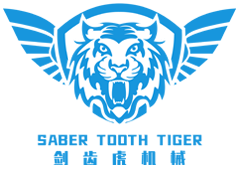13
2025
-
09
How CNC Busbar Punching Can Revolutionize Your Production Line Efficiency
How CNC Busbar Punching Can Revolutionize Your Production Line Efficiency Table of Contents 1. Introduction to CNC Busbar Punching 2. Understanding CNC Busbar Punching Technology 3. Key Benefits of CNC Busbar Punching 3.1 Enhanced Precision and Accuracy 3.2 Increased Productivity and Efficiency 3.3 Cost-Effectiveness in Production
How CNC Busbar Punching Can Revolutionize Your Production Line Efficiency
Table of Contents
- 1. Introduction to CNC Busbar Punching
- 2. Understanding CNC Busbar Punching Technology
- 3. Key Benefits of CNC Busbar Punching
- 3.1 Enhanced Precision and Accuracy
- 3.2 Increased Productivity and Efficiency
- 3.3 Cost-Effectiveness in Production
- 4. Applications of CNC Busbar Punching in Manufacturing
- 5. Choosing the Right CNC Busbar Punching Machine
- 6. Future Trends in CNC Busbar Punching Technology
- 7. Conclusion
- 8. Frequently Asked Questions
1. Introduction to CNC Busbar Punching
In the competitive landscape of manufacturing, efficiency and precision are paramount. **CNC busbar punching** has emerged as a game-changing solution, enabling manufacturers to enhance their production lines significantly. This technology utilizes computer numerical control (CNC) systems to automate the punching process of busbars, thereby optimizing the overall manufacturing workflow. Understanding its implications can lead to substantial improvements in productivity, accuracy, and cost-efficiency.
2. Understanding CNC Busbar Punching Technology
CNC busbar punching refers to the process of using CNC machines to create holes and cut shapes in conductive busbars, which are essential components in electrical distribution systems. This technology is designed to handle various materials, such as copper and aluminum, making it versatile for different applications.
CNC busbar punching machines are equipped with advanced software that allows operators to input precise dimensions and specifications, ensuring that each punch is executed flawlessly. The integration of CNC technology minimizes human intervention, thereby reducing the likelihood of errors and enhancing overall operational efficiency.
3. Key Benefits of CNC Busbar Punching
3.1 Enhanced Precision and Accuracy
One of the standout features of CNC busbar punching is its **unmatched precision**. Traditional punching methods are often prone to inaccuracies, leading to costly rework. CNC technology, however, guarantees that each punch is executed with a high degree of accuracy, thus reducing waste and ensuring product quality. This precision is particularly critical in applications requiring tight tolerances.
3.2 Increased Productivity and Efficiency
CNC busbar punching significantly boosts productivity by allowing for high-speed operations. Unlike manual processes, which can be slow and labor-intensive, CNC machines can operate continuously, enhancing throughput. Additionally, the ability to automate complex designs means that multiple pieces can be punched simultaneously, further increasing efficiency on the production line.
3.3 Cost-Effectiveness in Production
While the initial investment in CNC busbar punching technology may be considerable, the long-term savings are undeniable. Reduced labor costs, minimized material waste, and faster production times contribute to a significant decrease in overall operational expenses. Manufacturers can also enjoy lower costs per unit, making their products more competitive in the market.
4. Applications of CNC Busbar Punching in Manufacturing
CNC busbar punching finds applications across various industries, including:
- **Electrical Engineering**: Busbars are integral in power distribution systems, and CNC punching ensures they meet the stringent standards required in this field.
- **Automotive Industry**: In automotive manufacturing, busbars are used in electrical systems, where precision and reliability are critical.
- **Renewable Energy**: With the rise of renewable energy sources, busbars are essential for solar and wind energy systems, making CNC punching vital for efficient production.
Each application necessitates unique designs and specifications, and CNC busbar punching technology is adaptable enough to accommodate these diverse needs.
5. Choosing the Right CNC Busbar Punching Machine
The selection of an appropriate CNC busbar punching machine is crucial for maximizing benefits. Here are some key considerations:
5.1 Essential Features to Look For
When evaluating CNC busbar punching machines, consider the following features:
- **Punching Force**: Ensure the machine has adequate force to handle the thickness of the materials you plan to work with.
- **Speed**: Higher speed can lead to increased productivity, so look for machines that offer rapid punching capabilities.
- **Software Compatibility**: A user-friendly interface and compatibility with design software can significantly enhance operational efficiency.
5.2 Top Brands in CNC Busbar Punching Machines
Several reputable brands are known for producing high-quality CNC busbar punching machines. Notable names include:
- **Amada**: Renowned for its innovative technology and superior build quality.
- **Trumpf**: Offers machines characterized by speed and precision.
- **Mitsubishi**: Known for reliable and efficient CNC solutions.
Researching and comparing these brands can help you make an informed decision that aligns with your production needs.
6. Future Trends in CNC Busbar Punching Technology
As technology continues to evolve, CNC busbar punching is expected to undergo significant advancements. Key trends to watch include:
- **Integration with IoT**: The Internet of Things (IoT) will likely play a role in enhancing machine monitoring and predictive maintenance, leading to further efficiency gains.
- **Automation and Robotics**: Increased automation will streamline operations, reducing manual labor and associated costs.
- **Sustainability**: As environmental concerns grow, manufacturers will seek more sustainable practices, and CNC technology can facilitate this by minimizing waste.
Staying updated with these trends will help manufacturers leverage the full potential of CNC busbar punching.
7. Conclusion
Incorporating CNC busbar punching technology into your production line can be a transformative decision that enhances efficiency, precision, and cost-effectiveness. As the manufacturing industry continues to evolve, embracing such innovations will be essential for staying competitive. The benefits of improved accuracy, increased productivity, and reduced operational costs make CNC busbar punching a worthwhile investment for manufacturers across various sectors. By understanding the technology, its applications, and future trends, companies can position themselves for success in an ever-changing landscape.
8. Frequently Asked Questions
1. What materials can be used in CNC busbar punching?
CNC busbar punching can handle a variety of conductive materials, including copper and aluminum, which are commonly used in electrical applications.
2. How does CNC busbar punching improve production efficiency?
By automating the punching process, CNC technology reduces manual labor, increases speed, and enhances accuracy, leading to greater overall productivity.
3. What should I consider when choosing a CNC busbar punching machine?
Key considerations include punching force, speed, software compatibility, and the specific features that align with your production needs.
4. Can CNC busbar punching be used for small batch production?
Yes, CNC busbar punching is flexible enough to accommodate both large-scale and small-batch production, making it suitable for various manufacturing scenarios.
5. What are the future prospects of CNC busbar punching technology?
The future of CNC busbar punching looks promising, with advancements in IoT integration, increased automation, and a focus on sustainability expected to shape its evolution.
Related news





